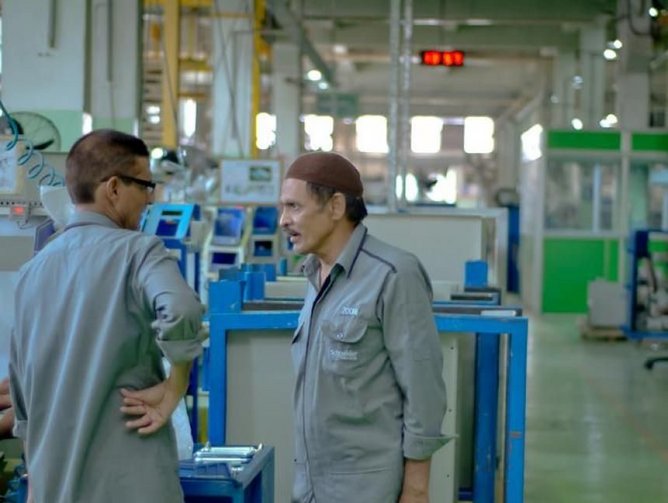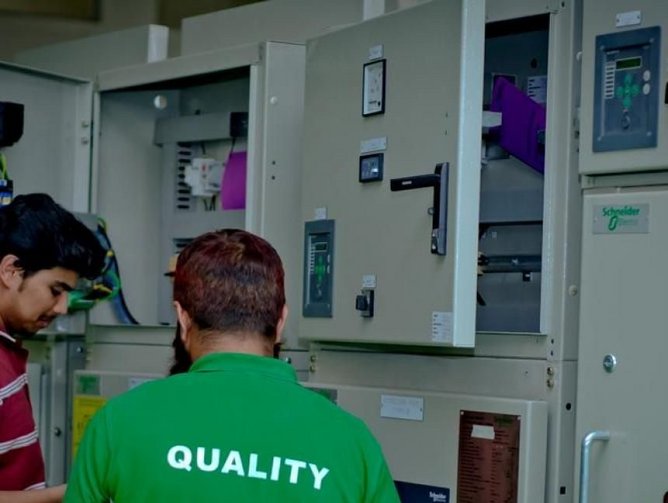Schneider Electric is a company that prides itself as being the global supply chain specialist in energy management and automation. The company develops connected technologies and solutions to manage energy processes in a safe, reliable, efficient and sustainable way. But to be a global specialist, serving customers in different regions worldwide, the company needs to have an efficient and lean supply chain.
That’s definitely the case for the Pakistan arm of the company, as the company has recently undergone a major transformation project that looked to streamline its entire supply chain, realising cost benefits and providing an overall greater experience for its customers. The major benefits that the project has brought upon Schneider include lesser lead times, a more efficient production process and overall cost reduction throughout the entire supply chain.
Before any transformation could happen, Owais Ahmed, Executive Officer Supply Chain at Schneider Electric, had to evaluate key operational units working under the umbrella of supply chain in Pakistan. Carrying expertise in Logistics division of supply chain, Owais broke down costs associated with the importing of products from overseas as well as analysing where the lead time between the product sitting in the factory and being in the hands of the customer could also be reduced.
“Once the product is imported to Pakistan, the landing cost of the product and the charges, including customs and transportation, all needed to be streamlined,” says Ahmed.
It was through this desire to streamline those costs that Schneider made the decision to prioritise sea imports over air, with the costs associated with sea import being significantly lower.
“This was a transformation that Schneider hadn’t undertaken before,” Ahmed adds.
Transformation of importation
The transformation of the supply chain was not an overnight process. Ahmed had previously worked at Schneider back in 2013, when the company set out specific goals of reducing lead time, working on contract formalisation and regularly monitoring systems in order for the production team to be able to be updated at any time.
Ahmed returned to Schneider and the goal remained the same as he now managed the entire import and somewhat export of Schneider Electric Pakistan.
“I am in constant contact with suppliers from France, China and other global partners following up with them about the orders placed by our upstream supply chain team. My task is getting the products ready, arrange logistics and deliver them in the hands of production/assembly unit in time,” he says.
With the transformation already taking shape during Ahmed’s first tenure, the overall timeframe for the project has been just over three years and Ahmed can already point to significant benefits to the business as a result.
Lead time, production efficiency (including import and assembly right through to delivery) and of course reduced costs are the major benefits that Schneider can reap as a result of this transformation, but for Ahmed these benefits serve a greater purpose.
“Customer satisfaction. Time efficiency and reduced costs impact not only Schneider Electric Pakistan but the customer themselves,” he says.
“When you reduce lead time, the customer is satisfied. When you reduce operational costs involved, you bring down the cost of the overall product and that is beneficial to both the organisation and the customer.”
The benefit in creating a more efficient process and in turn a more efficient supply chain needs no explanation, but Ahmed points out that there is a line in which these three elements (time, efficiency and cost) cross one another and it is this gap in which the supply chain industry as a whole is currently focusing.
Technologically enabled
For a transformation of this scope to happen, the company must look at its current technology software and processes. This is where being part of the larger Schneider Group has enabled the Pakistan arm to evaluate its own technological processes and make improvements.
This included the upgrading of its previous Oracle software to a SAP Software solution. Through this software, Ahmed and the supply chain department have found their technology interface to be much more streamlined and efficient.
“In upgrading our IT and technology software we have definitely better enabled our processes, be it inventory or assembly, through this digital transformation,” he says.
“The role of technology and the role of software has had a big impact on the supply chain. Through the deployment of this new software we were able to set a higher level of standard.”
While better serving vendors, suppliers and customers is one goal, the main ambition behind the transformation has been the reduction of the costs involved throughout every step of the supply chain process. By upgrading technology processes, Ahmed has been able to be much more “on the ball” on the status of orders through new monitoring capabilities.
With a keen focus on reducing the costs, one can be forgiven in thinking that there’s no real pleasure beyond monetary.
“As supply chain practitioner, it gives us great joy to uncover and enable these improvements. It really helps on the day to day running of the process as well, which is always a bonus,” he says.
With technology, every day is a new day and a new wave of innovation. For Schneider’s Pakistan arm, being joined with the larger Schneider Group allows Ahmed to remain on his toes when it comes to the latest technology developments that could transform the supply chain industry in Pakistan.
“Every new development is shared to us and we get training provided to us free of cost,” he says. “With regards to technological developments its very beneficial. Although we are here in Pakistan, through this training and advanced linkage between our international organisation, we are much more knowledgeable of the developments, the trends and the pace of the technological demands of the supply chain industry as compared to our competitors.”
As with any technology, particularly technology that has already been adapted by the group in its global processes, the key is in adapting it further to allow the organisation to grow accordingly in Pakistan.
A major part of the make-up of Schneider’s supply chain is it’s sourcing. Through this transformation, Ahmed along with sourcing department has refined the company’s strategic sourcing methods. This all ties into the overall goal of reducing lead time, reducing the costs and better serving the customers.
When an order is made, Ahmed and the supply chain department will check the region in which the order is made from and immediately look at alternative products (to the same standard and specification) located in different regions, ones that may have much quicker and cheaper lead times.
This process is enabled through a wide range of vendors and suppliers that Schneider has amassed locally in Pakistan.
“For example, the lead time of a product coming from South Africa, taking into account clearance and transportation, is around 40-45 days,” says Ahmed.
“Compare it to another supplier more locally. It’s the same product specification and quality, but it takes no more than 18-20 days to reach our factory and be ready to ship out to the customer, which in domain of supply chain is a greater reduction of lead time.”
To the future
With this transformation already considered a key success to the company, Ahmed has his eyes set firmly on the next step, a new way in which the company can grow to be better for the customer.
This next step, he feels, is one more focused on sustainability in the supply chain.
“In the supply chain industry, every department operates separately and individually, however, linked through a chain which keeps every department bonded with each other” he says. “With the passage of time we are beginning to see a number of departments operating under the umbrella of supply chain. Similarly, more chances are created for practitioner like me to create sustainability and tap the gaps amongst different operational units. For me, the next transformation will be building and developing sustainability into that supply chain.”





